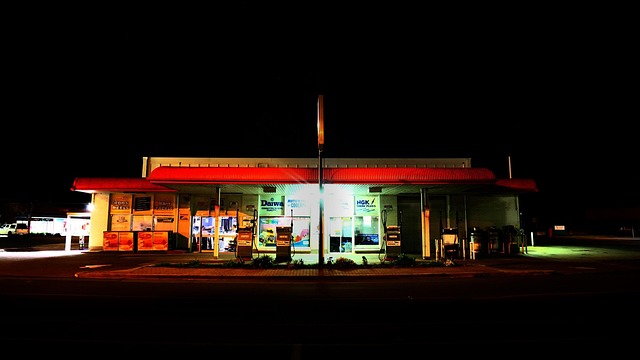In today's dynamic manufacturing landscape, interior and exterior 3D rendering is a revolutionary tool for rapid prototyping, enabling designers to create precise physical prototypes from digital models. This technology streamlines production, accelerates evaluation, and reduces costly delays, giving manufacturers a competitive edge. By utilizing advanced rendering techniques, designers can optimize complex geometries, textures, and patterns, ensuring accurate prototypes that align with the desired design vision both internally and externally. 3D printing offers significant advantages over traditional methods, providing flexibility, rapid iteration, and cost-effective production of intricate designs, ultimately bringing innovative products to market faster.
“Revolutionize your prototyping process with 3D printing-ready modeling—a game-changer in rapid product development. This article guides you through the essential steps of preparing models for 3D printing, from understanding the unique benefits to mastering interior and exterior rendering techniques. Learn how efficient design adjustments can enhance print quality, ensuring precise prototypes. Discover the advantages of 3D printing over traditional methods, making it an indispensable tool for creating complex shapes with intricate details, all while saving time and resources.”
Understanding the Importance of 3D Printing-Ready Models
In today’s fast-paced design and manufacturing landscape, having 3D printing-ready models is paramount for efficient rapid prototyping. Unlike traditional modeling methods, 3D rendering allows designers to create intricate, detailed digital representations of products or structures both internally and externally. This process is crucial as it directly translates into accurate physical prototypes, enabling quick evaluation and iteration during the development phase.
Interior and exterior 3D rendering offers a multitude of benefits, from enhancing design accuracy to streamlining production timelines. By focusing on these aspects early in the design cycle, manufacturers can avoid costly rework later and bring products to market faster. Ultimately, this precision and efficiency are key differentiators in today’s competitive environment, ensuring that innovative designs are realized with minimal delay.
Interior and Exterior Rendering Techniques for Optimal Results
In the realm of 3D printing-ready modeling for rapid prototyping, achieving optimal results hinges on meticulous preparation, and this includes utilizing advanced interior and exterior 3D rendering techniques. Interior rendering involves creating detailed digital representations of a model’s internal structures, ensuring every component is accurately depicted for precise printing. Techniques like ray tracing and global illumination simulate light behavior to produce realistic shadows, textures, and reflections within the model, enhancing its visual fidelity.
Exterior rendering, on the other hand, focuses on portraying the overall form and aesthetic appeal of a design. Utilizing high-resolution textures, material libraries, and advanced shaders can significantly enhance the visual quality of exterior 3D renderings. This not only aids in better visualizing the final printed product but also helps in communicating design intent to stakeholders, fostering informed decision-making before production begins.
Preparing Your Designs for Rapid Prototyping
Preparing your designs for rapid prototyping involves a careful balance between aesthetics and manufacturability. With 3D printing, both interior and exterior details can be brought to life with intricate precision, allowing for complex geometries that were once challenging or impossible to achieve. However, these fine details must be thoughtfully incorporated into the design process to ensure successful printing outcomes.
Interior and exterior 3D rendering plays a crucial role here. During the modeling phase, it’s essential to consider how each element will translate into a physical prototype. Overhangs, for instance, need support structures to prevent warping or deformation during printing. Complex textures and patterns should be optimized for the chosen 3D printing material to ensure their integrity. By utilizing advanced rendering techniques, designers can preview these features and make adjustments early in the process, ensuring that final printed prototypes accurately represent the intended design vision both inside and out.
Benefits of Using 3D Printing for Prototype Development
Using 3D printing for prototype development offers numerous advantages over traditional manufacturing methods, especially in the realms of design flexibility and rapid iteration. This cutting-edge technology allows designers and engineers to translate their digital creations into tangible, physical models with remarkable precision. With interior and exterior 3D rendering techniques, it’s possible to create prototypes that closely mirror the final product, providing a realistic assessment of form, fit, and function.
One of the key benefits is the ability to produce complex geometries and custom designs quickly and cost-effectively. Unlike CNC machining or injection molding, which often require expensive tooling and long lead times, 3D printing can create intricate parts with minimal setup costs and shorter production runs. This agility in prototyping enables faster time-to-market, facilitates design refinement, and encourages innovative problem-solving.
In conclusion, embracing 3D printing-ready modeling is a game-changer for rapid prototyping. By utilizing advanced interior and exterior 3D rendering techniques, designers can create detailed digital prototypes that streamline the development process. This innovative approach offers numerous benefits, including faster iteration times, cost-effectiveness, and enhanced design flexibility. With proper preparation of designs, from refining mesh density to ensuring model readiness, businesses can efficiently bring their concepts to life, revolutionizing the way we prototype and bringing new ideas to market swiftly.
